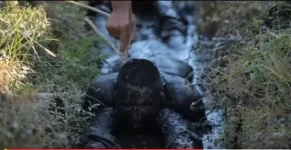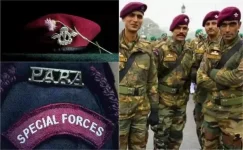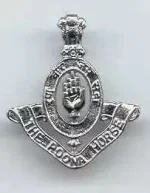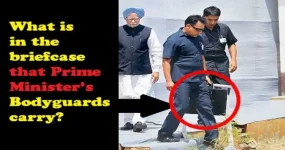The Paratroopers (Airborne) are Elite Troops, not Special Forces. Only these Paratroopers can aspire to be a Para Commando (Also called Para SF) and have to take part in one of the toughest selection process in the world.
All Indian paratroopers are volunteers. Some enter the Para regiments fresh from recruitment, while others transfer in from regular army units. The first process for an aspirant includes getting into the Paratroopers (Airborne) Battalions (5, 6, 7). This includes a 3-6 months rigorous probation/selection period with a passing rate of just about 30% or less on average.
Specialties: Infiltration, ex-filtration, assault, room and building intervention, intelligence gathering, patrolling, ambush tactics, counter-ambush tactics, counter insurgency, counter-terrorism, unconventional warfare, guerrilla warfare, asymmetric warfare, raids & sabotage, martial arts training, tactical shooting, stress firing, reflex shooting, buddy system drills, close quarter battle, tactical driving, advance weapon courses & handling, sniping, demolition training, survival skills, linguistic training, logistic training, trade-craft training is imparted by the intelligence agencies.
All Indian paratroopers are volunteers. Some enter the Para regiments fresh from recruitment, while others transfer in from regular army units. The first process for an aspirant includes getting into the Paratroopers (Airborne) Battalions (5, 6, 7). This includes a 3-6 months rigorous probation/selection period with a passing rate of just about 30% or less on average.
- One part was the traditional parachute force, with the 3rd, 4th, 5th, 6th and 7th Parachute. The other were the five Parachute (SF) units with the 1 Para (SF) , 2 Para (SF), 9 Para (SF), 10 Para (SF) and 21st Parachute (Special Forces). The 1 Para (SF) is trained for mountain warfare, the 9 Para (SF) is trained for jungle warfare and the 10 Para (SF) is trained for desert warfare, & so on.
- The initial phase is a three month probationary training which filters out the promising candidates for the next phases of training. Those who successfully complete the selection are awarded the Para wings and the Maroon Beret, before commencing their yearlong initial Para (Special Forces) battalions (1, 2, 3, 4, 9, 10, 11, 12, 21 PARA), which takes place twice a year in the spring and the autumn term.
MAJOR DIFFERENCE
- The Indian Para SF (insignia: Balidan) is different from Para battalions (insignia: Shatrujeet) and other commandos. The only similarity between them is that all three forces are commandos. The other two are best used behind enemy lines; the Para battalions have the ability to hold ground for brief periods, while the Para SF are mobile forces that have to strike multiple targets hard and move on -- the "tip of the spear". Para (SF) are Special Forces, especially trained in unconventional warfare
- Para Commandos are Special Forces unit of the Indian Army's Parachute Regiment. according to reports, out of approx 8000 Elite Paratroopers (Airborne) only 4500 are Special Para Commandos (SF). The SF Operate in Squads of 6: Weapons, Demolition, Navigation, Communication & Medical
TRAINING
The initial phase is a three month probationary training of physical fitness and aptitude test and it is so gruesome that more than 80% of the applicants drop out.- A notable aspect of this selection is the route match, which involves running 60-70 km with 23 kgs of weight. It is one of the longest and toughest phases in world where the applicant is exposed to sleep deprivation, humiliation, exhaustion, mental and physical torture. The selection has reported deaths in the process itself. The attrition rate is very high and is in between 90-95 percent. [100 km Endurance Run in approx. 13 hrs]
- Those who successfully complete the test are subjected to a five-week-long process called the ‘hell’s week’ where commandos are put through extreme sleep deprivation coupled with the most difficult physical tasks, like shooting a target 25 meters away with a man standing next to it, who is usually your buddy.
- It's also where they believe in something called stress inoculation. They expose you to pressure and suffering in training so you'll build up your immunity. It's a kind of classic psychological conditioning in various types of hostile control scenarios: the techniques were designed to disorient, break-down, isolate, and exploit them in their weakened state. Regardless of how successfully you apply what you've learned, everyone is pretty miserable.
- The first phase teaches you how to try to survive alone in the wilderness (edible bugs & plants, how to build tools & get warm, etc...). The second teaches how to evade capture & possibly signal friendlies to come rescue you. The third (and absolute worst) is about dealing with capture, resisting interrogation, enduring certain techniques, which I personally think is a good thing because it helps to know how bad things can get).
- All in all, even though you KNOW they can't hurt you & it's not going to last very long, at the time your mind forgets that & it becomes a living nightmare beyond belief; something that has to be experienced to fully appreciate.
- The Special Forces training is 3.5 years, the longest anywhere and the training is also a continuous process, in the special forces, the members are imparted both basic and advance training. They are taught specialized mode of infiltration and ex-filtration, either by air (combat free-fall) or sea (combat diving).
Specialties: Infiltration, ex-filtration, assault, room and building intervention, intelligence gathering, patrolling, ambush tactics, counter-ambush tactics, counter insurgency, counter-terrorism, unconventional warfare, guerrilla warfare, asymmetric warfare, raids & sabotage, martial arts training, tactical shooting, stress firing, reflex shooting, buddy system drills, close quarter battle, tactical driving, advance weapon courses & handling, sniping, demolition training, survival skills, linguistic training, logistic training, trade-craft training is imparted by the intelligence agencies.




